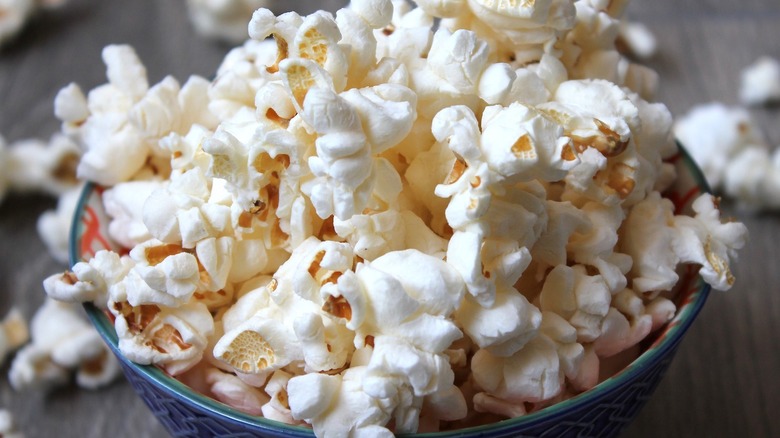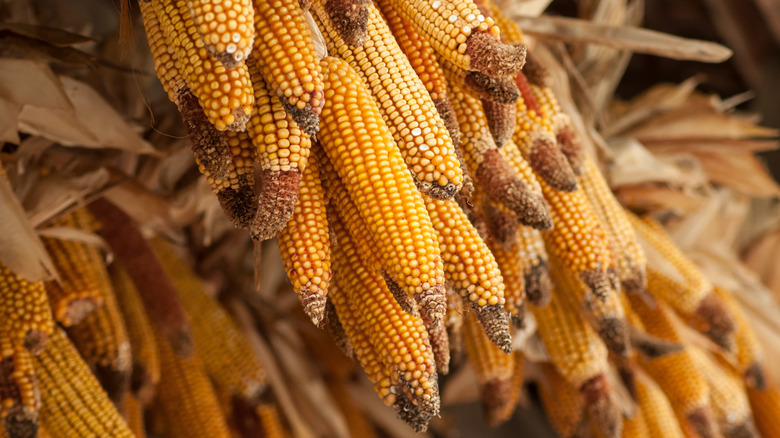Popcorn Has Been Around For Longer Than You Think
One thing that we can all agree on as a nation, is popcorn. Whether you like it buttery and salty, prefer it coated in caramel or cheese, or love you some kettle corn, this versatile snack is something nearly everyone can get behind, but exactly how long has popcorn been around? As it turns out, it's a pretty old idea. According to Popcorn For The People, only one variety of corn produces that perfect pop, "zea mays everta."
What is thought to be one of the world's oldest foods, has been around for way longer than we might have initially thought. Especially considering that corn has been grown and harvested for thousands of years, way before we were dousing it in butter and serving it at county fairs and movie theaters. According to the outlet, "The oldest popcorn known to date was found in New Mexico. In 1948, small heads of the zea mays everta were discovered by Herbert Dick and Earle Smith in a dry cave known as the 'bat cave.'" Carbon dating estimated the kernels to be approximately 5,600 years old.
Popcorn has been enjoyed for thousands of years
Popcorn has been popular in many different countries, too. According to The Spruce Eats, "evidence of popcorn throughout Central and South America, particularly Peru, Guatemala, and Mexico, is rampant." There are even funeral urns found in Mexico from 300 A.D. decorated to "depict a maize god with popped kernels adorning his headdress." It's clear it was used for more than just snacking, Popcorn.org tells us, "Popcorn was integral to early 16th century Aztec Indian ceremonies ...[as] decoration for ceremonial headdresses, necklaces and ornaments on statues of their gods, including Tlaloc, the god of rain and fertility."
It wasn't just popular in the Southwest, either. "French explorers who traveled to the new world discovered popcorn being made by the Iroquois Native Americans in the Great Lakes region," according to Popcorn For The People, indicating that even in the northern regions, popcorn was a popular food. As colonists moved around the area and the country slowly became more colonized, the popularity of the snack grew and spread, eventually becoming the omnipresent food you can find just about anywhere today.

